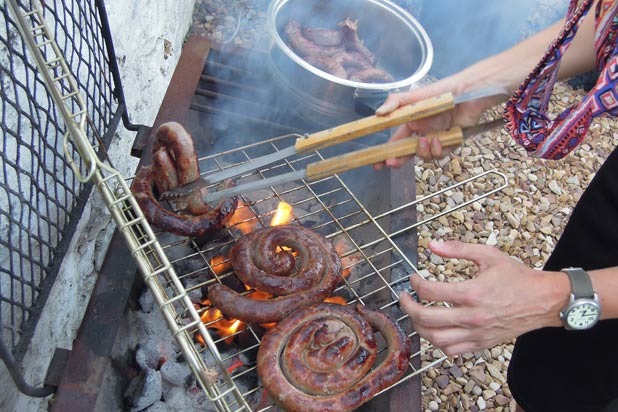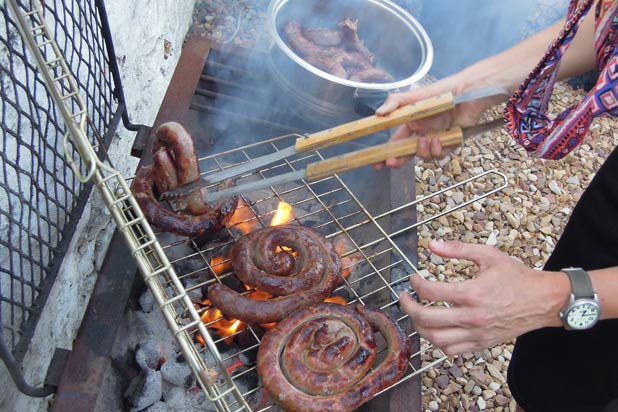You Won't Believe The Ways People Barbeque Around The World
Summer is upon us, and for meat lovers that means one thing: firing up the barbeque. What is it about cooking meat outside that turns a meal into a party? Chicken breast baked in the oven? That's Thursday night boring. Chicken breasts sizzling over a grill? That's crack open a cold one, invite your buddies over, break out the potato salad Saturday afternoon fun.
Click here for more on You Won't Believe the Ways People Barbeque Around the World (Slideshow)
Perhaps there's something about barbequing that harkens back to our hunter/gatherer days when our nomadic ancestors would huddle around the fire roasting up the day's kill to share among the tribe. A full belly meant a good day back then, thus lending a celebratory feel to the smoky smell of crackling meat.
Or maybe it's just that meat cooked over an open flame or on a grill tastes more "meaty," thanks to the Maillard Reaction, which occurs when the proteins in meat recombine with the sugars, creating the charred meat flavor and changing the color. The Maillard reaction occurs when meat is cooked at around 300-500 degrees and the outside of the meat gets hotter than the inside. Searing and grilling meats is the best way to produce this reaction, thus creating the pleasing "brown" flavor.
Most cultures have their own way of grilling. The Germans have schwenker, or pork neck steak grilled over a beech wood fire, while in Japan, Yakitori, or skewered grilled chicken, is practically an art form. No matter your background, chances are there's a delicious history of grilling meat in your culture.
In America, the barbeque is mostly about hotdogs and hamburgers, or depending on where you are, brats and steaks. The debate over charcoal or natural gas grills rages on at backyard pool parties throughout the country, but the grill is pretty much the barbeque standard from coast to coast. However, that's not the case everywhere. In the Alps, "grilling" is done atop a hot stone in the center of the table. In the Philippines, the animal is cooked whole on a spit over an open fire. There are tons of variations on the barbeque tradition, but they all have one thing in common: they're really mostly about a community coming together to feast among friends.
Braai, South Africa
The word braai is Afrikaans for "barbeque" and can be used as a noun when used to describe the grill or a verb to describe act of grilling. It can also be used to describe the party that's often the center of a braai. Typically the meat at a braai is boerewors (a pork and lamb sausage), pork, chicken or rock lobster.
Gogi-Gui, South Korea
The word literally means "roasting meat," and it is traditionally done over an open flame right at the table. The meat is typically beef, either thick steaks marinated in soy sauce and sesame oil or brisket sliced so thinly it cooks almost on contact with a hot pan.
Read on to learn more about The Ways People Barbeque Around the World

